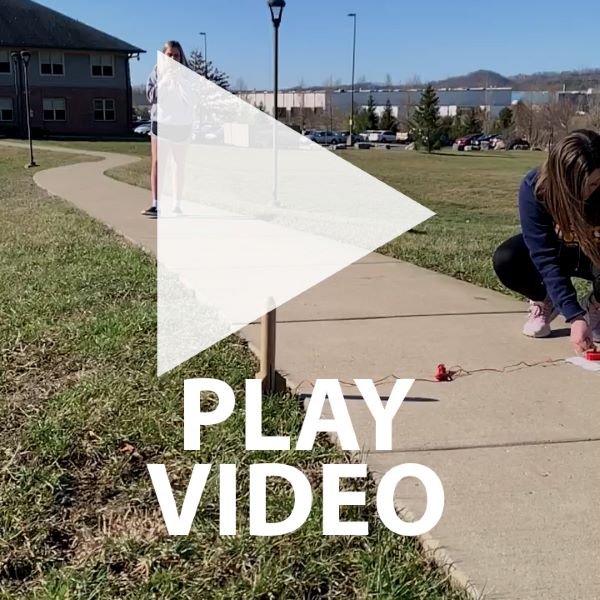By Steven Krolak

Neil Brewer, senior lecturer in education, uses model rocketry to illustrate elementary science principles while helping teacher candidates build proficiency in the collaborative practices they will need to engage and inspire the next generation of K-12 learners.
It’s more than rocket science
In the 200-level undergraduate course, Beginning Teacher Experiences, candidates become acquainted with concepts and dispositions or habits they will need to develop to become an engaging elementary teacher.
Course objectives include becoming proficient in nuts-and-bolts classroom management strategies, appreciating multiple pathways to learning, and modeling the moral principles that anchor daily practices.
Brewer’s innovative rocketry project sounds like it might have been taken off a seventh-grade playground–which it was. Brewer’s brother, a teacher at North Harrison Middle School, had been using homemade model rockets in his seventh- and eighth-grade classes. He invited Brewer to watch the student-built rockets lift off from the school’s baseball field. In the excitement of the self-made engineers, Brewer recognized that this was about more than rocket science.
“It was obvious from watching that single launch that this was a project that could be utilized to build skills in following directions, persistence, creativity, safety, mathematics, demonstrating skills within scientific methods, all elements of the social studies, and vivid utilization of multiple intelligences,” Brewer said.
Reaching for the stars
At the most basic level, Brewer’s students, like those middle schoolers, build and launch rockets.
What makes the project attractive to Brewer is, among other things, its universal applicability.
“These rockets can be constructed and launched over 1000 feet in the same class period with virtually any grade level, and second graders through graduate education majors have built them with me,” Brewer said.
The project also hones collaboration in small groups of two or three students.
“This is a configuration with which most students coming out of middle school and high school have little experience, especially when it comes to individual construction responsibilities, which are required for the group’s rocket to make it to the launch pad,” Brewer said.
In addition, the project challenges the students to problem-solve without much supervision.
Finally, it’s all about modeling. Like those they will teach, the candidates start with zero knowledge and a random assortment of grocery bags, drinking straws, paper clips, tape, and paper towel tubes. And via questioning, listening, deduction, persistence, and serendipity, they, too, find their own ways to reach for the stars.
“It is my desire to witness young educators seeing what they can achieve using tools they never thought they’d use, along with junk from home they never thought could fly,” Brewer said.
Breaking boundaries
Brewer’s teaching philosophy seeks to stimulate students’ multiple intelligences. As pioneered by educator Howard Gardner, the idea presents eight unique intelligences, including linguistic, spatial, logical/mathematical, bodily-kinesthetic, interpersonal, naturalistic, and musical. Over the years, Brewer has designed activities that bring these together into holistic learning experiences. Learning to play chess, camping, and even playing the ukulele are moments that embody his brand of authentic engagement.
Like the rockets, this curriculum breaks boundaries. In Brewer’s interdisciplinary learning space, students fuse science and social studies, math, and history. They learn that one subject cannot be understood without the others.
As his nominating colleague observed, “The hardest to teach are the social and emotional aspects of learning. Neil hits the target by presenting materials for self-discovery, social interaction, role modeling, vicarious learning, and self-reflection.”



